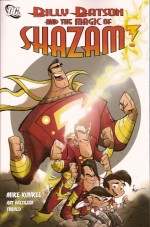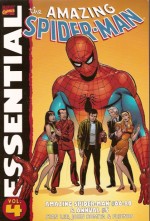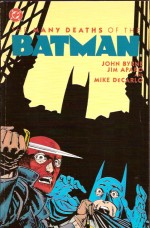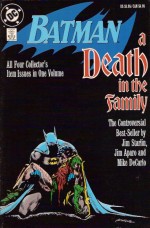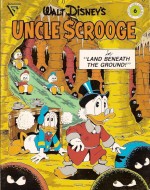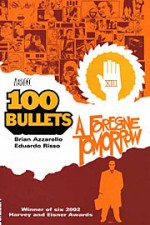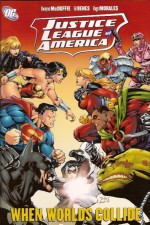
By Roy Crane (Fantagraphics Books)
ISBN: 978-1-60699-161-9
Modern comics evolved from newspaper comic strips, and these pictorial features were until relatively recently utterly ubiquitous and hugely popular with the public – and highly valued by publishers who used them as an irresistible sales weapon to guarantee and increase circulation and profits.
It’s virtually impossible for us to today to understand the overwhelming power of the comic strip in America (and the wider world) from the Great Depression to the end of World War II. With no television, broadcast radio far from universal and movie shows at best a weekly treat for most folk, household entertainment was mostly derived from the comic sections of daily and especially Sunday Newspapers. “The Funnies†were the most common recreation for millions who were well served by a fantastic variety and incredible quality.
From the very start humour was paramount; hence the terms “Funnies†and “Comicsâ€, and from these gag and stunt beginnings – a blend of silent movie slapstick, outrageous fantasy and the vaudeville shows – came a thoroughly entertaining mutant hybrid: Roy Crane’s Wash Tubbs.
Debuting on April 21st 1924 Washington Tubbs II was a comedic gag-a-day strip not much different from family favourite Harold Teen (by Crane’s friend and contemporary Carl Ed). Tubbs was a diminutive, ambitious young shop clerk when it began in 1924, but gradually the strip moved into mock-heroics, then through light action to become a full-blown, light-hearted, rip-roaring adventure series with the introduction of ancestral he-man and prototype moody swashbuckler Captain Easy in the landmark episode for 6th May, 1929.
As the tales became more exotic and thrill-packed the globe-trotting little dynamo clearly needed a sidekick who could believably handle the combat side of things, and thus in the middle of a European war Tubbs liberated a mysterious fellow American from a jail cell and history was made. Before long the mismatched pair were travelling companions, hunting treasure, fighting thugs and rescuing a bevy of startlingly comely maidens in distress…
The two-fisted, bluff, completely capable and utterly dependable, down-on-his-luck “Southern Gentleman†was something not seen before in comics, a raw, square-jawed hunk played straight rather than the buffoon or music hall foil of such classic serials as Hairsbreadth Harry or Desperate Desmond. Moreover Crane’s seductively simple blend of cartoon exuberance and design was a far more accessible and powerful medium for action story-telling than the somewhat static illustrative style favoured by artists like Hal Foster: just beginning to make waves on the new Tarzan Sunday page.
Tubbs and Easy were as exotic and thrilling as the Ape Man but rattled along like the tempestuous Popeye, full of vim, vigour and vinegar, as attested to by a close look at the early work of the would-be cartoonists who followed the strip with avid intensity: Floyd Gottfredson, Milton Caniff, Jack Kirby, Will Eisner and especially young Joe Shuster…
After a couple of abortive attempts starring his little hero, Crane bowed to the inevitable and created a full colour Sunday page dedicated to his increasingly popular hero-for-hire. Captain Easy debuted on 30th July 1933, in wild and woolly escapades set before his fateful meeting with Tubbs,
This first volume begins with the soldier of fortune undertaking a mercenary mission for the Chinese government to spy on the city of ‘Gungshi.’ In the heyday of popular exploration and aviator exploits the bold solo flight over the Himalayas to Chinese Turkestan was stirring enough but when Easy infiltrated the hidden citadel it heralded the beginning of a rollercoaster romp with sword wielding Mongols, sultry Houris, helpless dancing girls, fabulous beasts and wicked bandits: captivating entire families across the planet, week after addictive week.
With an entire page and vibrant colours to play with, Crane’s imagination ran wild and his fabulous visual concoctions achieved a timeless immediacy that made each page a unified piece of sequential art. The effect of the pages can be seen in so many strips since especially the works of such near-contemporaries as Hergé and giants in waiting like Charles Schulz.
These pages were a clearly as much of joy to create as to read. In fact, the cited reason for Crane surrendering the Sunday strip to his assistant Les turner in 1937 was the NEA Syndicate abruptly demanding that all its strips be henceforward produced in a rigid panel-structure to facilitate them being cut up and re-pasted as local editors dictated. Crane just walked away, concentrating on the daily feature. In 1943 he left the Syndicate to create the pilot strip Buz Sawyer.
At the end of the blockbuster epic Easy is a hero to the people of Gungshi, if not the aristocracy, who plot to oust him via the subtlest of means. The second adventure ‘The Slave Girl’ began on 21st January 1934, and found the occidental hero bankrupted to save the beautiful Rose Petal from the auction block, a chivalrous gesture that led to war with the rival city of Kashno, and a brutally hilarious encounter with South Sea pirates…
In an era where ethic stereotyping and casual racism were acceptable if not mandatory, the introduction of a vile and unscrupulous yank as the exploitative villain was and is a surprising delight. Rambling Jack is every inch the ugly, greedy American and by contrasting Easy’s wholesome quest to make his fortune with the venal explorer’s rapacious ruthlessness, Crane makes a telling point for the folks back home. It also makes for great reading as Chinese bandits also enter the fray, determined to plunder both cities and everybody in-between…
With the help of a lost British aviator Easy is finally victorious, but on returning to his Chinese employers he spots something whilst flying over the Himalayas that radically alters his plans…
‘The Sunken City’ is an early masterpiece of pictorial fiction, as Easy recruits comedy stooge ‘arry Pippy, a demobbed cockney British Army cook, to help him explore a drowned city he had spotted from the air, lost for centuries in a hidden inland sea. However, simply to get there the pair must trek through wild jungles where they encounter blowpipe-wielding cannibals and the greatest threat the valiant rogue has ever faced…
If I’ve given the impression that this has all been grim and gritty turmoil and drama thus far, please forgive me: Roy Crane was a superbly irrepressible gag-man and this enchanting serial abounds with breezy light-hearted banter, hilarious situations and outright farce – a sure-fire formula modern cinema directors plunder to this day. Easy is the Indiana Jones, Flynn (the Librarian) Carsen and Jack (Romancing the Stone) Cotton of his day and clearly blazed a trail for all of them.
Using a deep sea diver’s suit the pair explore the piscine wonders and submerged grandeur of the lost city, encountering some of the most magical and fanciful sea beasts ever recorded in comics before literally striking gold, but when the cannibals attack their treasures are lost and Easy finds himself captive and betrothed to the most hideous witch hag imaginable…
Risking everything the desperate treasure-seekers make a break for it only to re-encounter ‘The Pirates’ (April 14th -July 7th 1935), but before they get too far the husband-hungry witch and her faithful cannibals come after him, leading to a brutal, murderous conclusion.
After years in the Orient Easy and Pippy have a hankering for less dangerous company and make their way to Constantinople and Europe, but trouble was never far from the mercenary and in ‘The Princess’ (14th July – December 1st 1935) his gentlemanly instincts compel him to rescue a beautiful woman from the unwelcome attentions of munitions magnate Count Heyloff, a gesture that embroiled the Captain in a manufactured war between two small nations.
This tale clearly addressed the contemporary American sentiment that another world conflict was brewing and it’s obvious that Crane’s opinion was the deeply held common conviction that the whole international unrest was the result of rich men’s greedy manipulations…
Dark, bittersweet and painfully foreboding this yarn sees Easy become the target of Heyloff’s vengeance and the entire air force for the tiny underdog nation of Nikkateena in their bitter struggle for survival against the equally-duped country of Woopsydasia. Crane kept the combat chronicle light but on occasion his true feelings showed through in some of the most trenchant anti-war art ever seen.
This superb hardback and colossal initial collection is the perfect means of discovering or rediscovering Crane’s rip-snorting, pulse-pounding, exotically racy adventure trailblazer. The huge pages in this volume (almost 14 ½ by 10½ inches or 21x14cm for the younger, metric crowd) also contain a fascinating and informative introductory biography of Crane by historian Jeet Heer, a glowing testimonial from Charles “Peanuts†Schulz, contemporary promotional material, extra drawings and sketches and a fascinating feature explaining how pages were coloured in those long-ago days before computers…
This is comics storytelling of the very highest quality: unforgettable, spectacular and utterly irresistible. These tales rank alongside her best of Hergé, Tezuka and Kirby and led irrefutably to the creations of all of them. Now that you have the chance to experience the strips that inspired the giants of our art form, how can you possibly resist?
Captain Easy Strips © 2010 United Features Syndicate, Inc. This edition © 2010 Fantagraphics Books, all other material © the respective copyright holders. All rights reserved.
